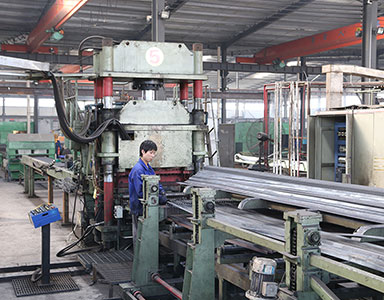Stainless Steel Perforated Metal An Overview
Stainless steel perforated metal is a versatile material that is widely used across various industries due to its unique properties and functionalities. In Myanmar, the demand for such materials has been rising, making it increasingly important to understand its advantages and applications.
What is Stainless Steel Perforated Metal?
Stainless steel perforated metal is a type of sheet metal that has been stamped or punched with holes to create a pattern. The holes can vary in size, shape, and spacing, allowing for a wide range of design possibilities. This material combines the strength and durability of stainless steel with the aesthetic appeal of an open design, making it suitable for both functional and decorative applications.
Advantages of Stainless Steel Perforated Metal
1. Durability Stainless steel is known for its resistance to corrosion, rust, and staining. This makes perforated stainless steel an ideal choice for environments where moisture and chemicals are present, such as in kitchens, laboratories, and outdoor settings.
2. Aesthetic Appeal The perforation patterns can be customized to create visually appealing designs. This makes stainless steel perforated metal popular in architectural applications, where it can enhance the beauty of facades, ceilings, and interior spaces.
3. Versatility Stainless steel perforated metal can be used in a variety of applications, including filtration, ventilation, and sound absorption. It can be found in products like speaker covers, heat exchangers, and decorative wall panels.
4. Lightweight Despite its strength, perforated metal is lightweight compared to solid metal sheets, making it easier to handle and install.
5. Eco-Friendly Stainless steel is recyclable, and using perforated metal can contribute to sustainable building practices. Its long lifespan means it reduces the need for frequent replacements.
stainless steel perforated metal

Applications of Stainless Steel Perforated Metal
Stainless steel perforated metal has a wide range of applications across different sectors
1. Construction and Architecture Used for decorative facades, screens, and railings, perforated metal adds a contemporary touch to buildings while providing necessary functionality like ventilation.
2. Industrial In factories, perforated metal is used for filtration systems, sound barriers, and safety guards. Its robust nature meets the demands of heavy-duty applications.
3. Furniture Design Modern furniture often incorporates perforated metal elements for aesthetic and functional purposes. Tables, chairs, and cabinets can benefit from its unique look and durability.
4. Transportation In the automotive and aerospace industries, stainless steel perforated metal is used in components that require weight reduction without sacrificing strength, such as in engine parts and interior panels.
5. Art and Sculptures Artists and designers use perforated metal to create dynamic sculptures and installations that play with light and shadow, adding an interactive element to public spaces.
Conclusion
Stainless steel perforated metal is a remarkable material that combines functionality, durability, and aesthetic appeal. Its growing popularity in Myanmar across various industries highlights the need for a deeper understanding of its properties and applications. As architectural trends move towards more sustainable and innovative designs, perforated metal will likely continue to play a significant role in shaping the future of construction and design in the region.
By investing in high-quality stainless steel perforated metal, builders, designers, and manufacturers can enhance their products while contributing to a more sustainable and aesthetically pleasing environment. The versatility and benefits of this material make it an excellent choice for anyone looking to blend form with function in their projects.
-
Why Galvanized Trench Cover Steel Grating Resists Corrosion
NewsJul.10,2025
-
The Versatility and Strength of Stainless Expanded Metal Mesh
NewsJul.10,2025
-
Load Calculations in Steel Grating Platforms
NewsJul.10,2025
-
Keeping Pets and Kids Safe with Chicken Wire Deck Railing
NewsJul.10,2025
-
Hole Diameter and Pitch for Round Perforated Metal Sheets
NewsJul.10,2025
-
Aluminium Diamond Mesh in Modern Architecture
NewsJul.10,2025
Subscribe now!
Stay up to date with the latest on Fry Steeland industry news.

